Introduction: The Dawn of a New Energy Era
For years, lithium-ion batteries have been the undisputed champions of portable power, fueling everything from our smartphones to electric vehicles. They’ve driven the technological revolution, but as the world shifts towards a greener, more sustainable future, a new contender is emerging from the electrochemical arena: Sodium-Ion Batteries. Imagine a world where our energy storage is not only more affordable and safer but also uses an incredibly abundant element found right here on Earth. That future is not a distant dream; it’s rapidly becoming a reality with sodium-ion technology.
We’re standing at the precipice of a significant energy transition, and understanding sodium-ion batteries is crucial for anyone keen on the future of sustainable power. This isn’t just about a new gadget; it’s about fundamentally changing how we store and utilize energy, impacting everything from your next car to how our cities are powered.
What is a Sodium-Ion Battery?
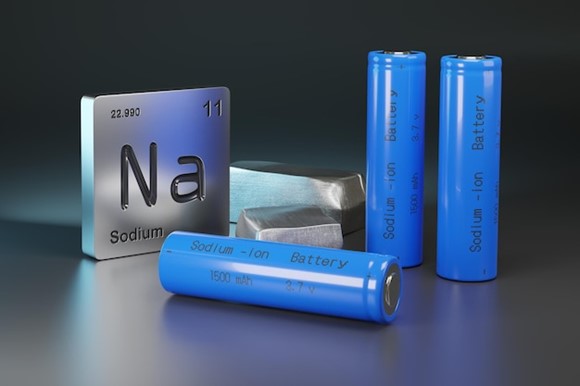
At its core, a Sodium-Ion Battery operates on the same fundamental principles as the more familiar lithium-ion battery. Both technologies generate an electrical charge through the movement of ions between a positive electrode (cathode) and a negative electrode (anode) through an electrolyte. The key difference, as the name suggests, lies in the star player: sodium ions instead of lithium ions.
Think of it like this: in a rechargeable battery, tiny charged particles (ions) shuttle back and forth. When you charge the battery, ions move to one side; when you use it, they move back, releasing energy. Sodium-ion batteries simply use sodium ions for this dance.
What makes sodium so appealing?
- Abundance: Sodium is incredibly plentiful, found in vast quantities in seawater and rock salt. This contrasts sharply with lithium, which is geographically concentrated and becoming more costly to extract.
- Cost-Effectiveness: Because sodium is so common, the raw materials are significantly cheaper. When produced at scale, industry experts predict sodium-ion batteries could be up to 30% more affordable than their lithium-ion counterparts.
- Safety: Sodium-ion batteries generally have a higher thermal stability, reducing the risk of overheating and thermal runaway – a significant safety advantage. This also means they can often tolerate a full discharge without damaging the battery, which simplifies transportation and storage.
While current commercial sodium-ion batteries typically have a lower energy density (around 160 Wh/kg) compared to lithium-ion (around 200 Wh/kg), lab developments have already pushed this significantly higher, with prototypes achieving 247 Wh/kg. This gap is rapidly closing, making them a viable alternative for many applications.
How Does a Sodium-Ion Battery Work?
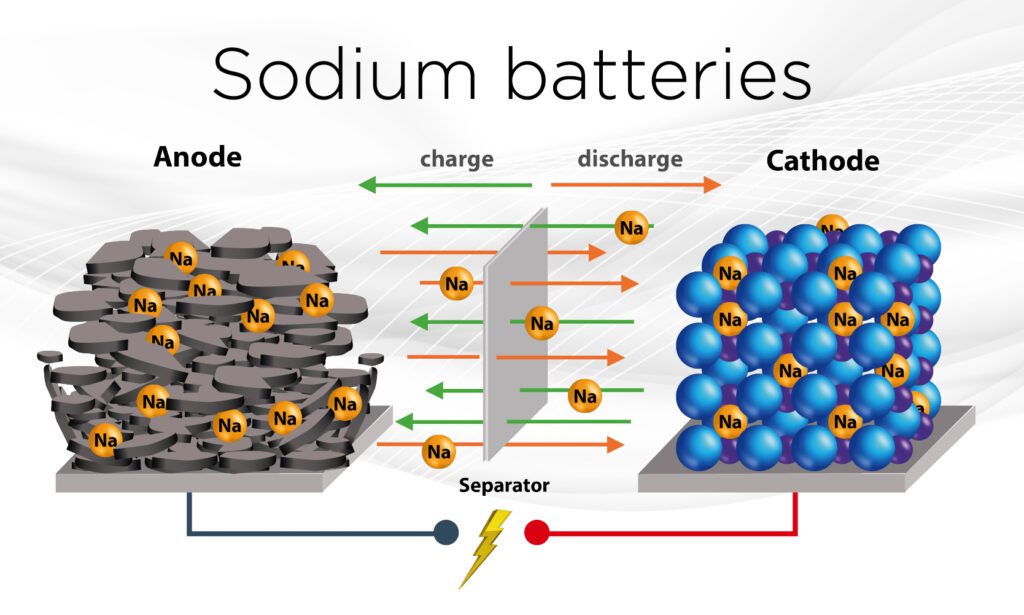
The working principle of a Sodium-Ion Battery is elegantly simple and mirrors its lithium-ion counterpart. It’s all about a controlled chemical reaction that creates a flow of electrons, which we use as electricity.
- Inside the Battery: The battery consists of four main components: a negative electrode (anode), a positive electrode (cathode), a separator, and an electrolyte. The electrodes are the “storage units” for the sodium ions, while the electrolyte is the liquid or gel that allows the ions to move between them.
- Discharging (Using the Battery): When you connect the battery to a device (like your phone or an electric car motor), the sodium ions stored in the anode are eager to move to the cathode. They travel through the electrolyte and the separator to reach the cathode. This movement of positive ions creates a flow of electrons in the external circuit, which is what powers your device. The electrons can’t travel through the separator, so they are forced to take the “long way around” through the external circuit, creating the electrical current.
- Charging (Recharging the Battery): When you plug the battery in to charge, the process reverses. The electrical energy from the charger forces the sodium ions to travel back from the cathode, through the electrolyte, and return to the anode. Once all the sodium ions are back in the anode, the battery is fully charged and ready to power your devices again.
- Key Ingredients: The anode is typically made of hard carbon, and the cathode uses sodium-based compounds like Prussian blue or sodium layered oxides. The materials used in sodium-ion batteries are much more abundant and less expensive than those in lithium-ion batteries, which use materials like cobalt and nickel. This difference in composition is what makes them so promising for the future of energy storage.
The beauty of this system is its efficiency and reversibility, allowing for thousands of charge-discharge cycles.
Who Needs Sodium-Ion Batteries?
The beauty of Sodium-Ion Batteries lies in their versatility. They aren’t just for one specific niche; their unique properties make them ideal for a broad spectrum of users and applications.
| Target Audience | Specific Needs Met by Sodium-Ion Batteries |
| Electric Vehicle (EV) Manufacturers | Reduced production costs, increased safety (especially for entry-level and urban EVs), less reliance on volatile lithium supply chains. Ideal for vehicles with standard range requirements. |
| Renewable Energy Installers | Cost-effective, large-scale storage solutions for solar and wind farms. Helps stabilize the grid, manage intermittent energy sources, and provide reliable power backup. |
| Homeowners & Businesses (Off-Grid/Backup Power) | Affordable home battery storage for solar panels, reliable backup power during outages, especially appealing in regions like Cameroon where grid stability can be a concern. Enhanced safety for residential installations. |
| Developing Nations & Remote Communities | Economical and robust energy storage for micro-grids and rural electrification projects, offering a sustainable path to reliable power without the high upfront cost of lithium. |
| Grid Operators & Utilities | Large-scale, cost-effective grid stabilization, peak shaving, and load balancing. Reduces strain on infrastructure and integrates more renewables efficiently. |
| Manufacturers of Low-Speed EVs & Electric Bikes/Scooters | Excellent performance for applications where weight isn’t the primary concern but cost-effectiveness and safety are paramount. |
| Environmental Advocates & Sustainable Tech Enthusiasts | A “greener” battery option due to abundant, easily sourced materials and potentially lower environmental impact from mining compared to lithium. |
From massive grid storage facilities to the growing fleet of affordable electric vehicles, the demand for a more sustainable and cost-effective battery solution is universal.
Why You Need Sodium-Ion Batteries
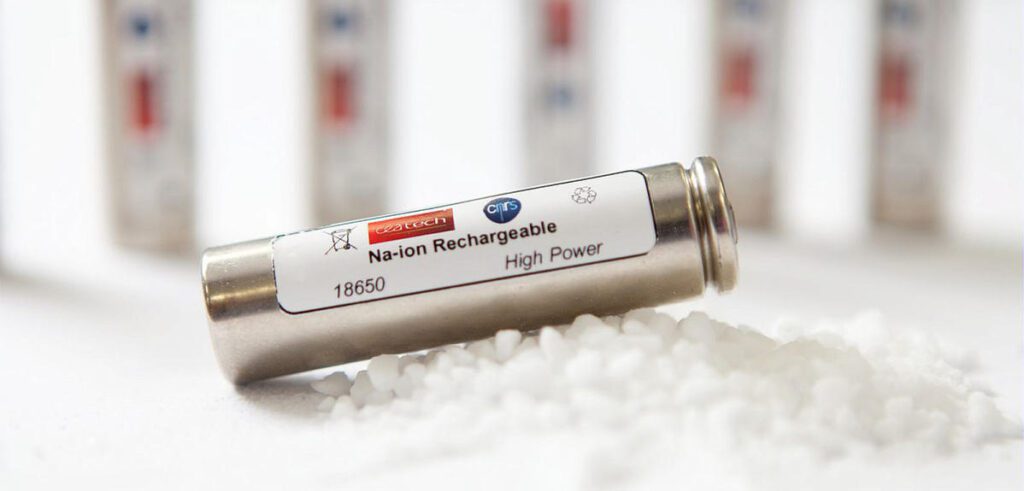
Why should you, the reader, care about Sodium-Ion Batteries? Because they solve some of the most pressing challenges we face in energy today.
Problems You Might Be Facing (Without Sodium-Ion Solutions):
- High Costs of Renewables: You might want to install solar panels for your home or business in Cameroon, but the cost of adequate battery storage makes the entire project prohibitive.
- Grid Instability & Power Outages: Frequent power cuts disrupt daily life, impact businesses, and highlight the need for reliable backup power solutions that are also affordable.
- Environmental Concerns: You’re conscious of the environmental footprint of current battery technologies, particularly regarding resource scarcity and mining impacts.
- EV Affordability: You’re interested in an electric vehicle but find the purchase price, often driven by battery costs, too high for your budget.
- Safety Worries: Concerns about battery fires or overheating from existing technologies might deter you from adopting certain applications.
How Sodium-Ion Batteries Solve These Problems:
- Unmatched Affordability: Say goodbye to prohibitively expensive energy storage! Sodium-ion batteries promise to be up to 30% cheaper than lithium-ion. This cost reduction means more accessible solar-plus-storage solutions for homes and businesses, lowering your electricity bills and providing energy independence. Imagine a future where powering your home with solar in Douala is within everyone’s reach.
- Safety & Peace of Mind: The enhanced thermal stability of sodium-ion batteries significantly reduces the risk of thermal runaway, making them a safer choice for home energy storage, especially in densely populated areas.
- Environmental Responsibility: By using an abundant, non-toxic, and easily sourced material like sodium, you’re investing in a technology with a smaller environmental footprint. This is a step toward a truly circular and sustainable energy economy.
- Paving the Way for Affordable EVs: As sodium-ion batteries become more widespread, their lower cost will trickle down to the final product. This will lead to more affordable electric vehicles, making EV ownership accessible to a broader population, including many families in Cameroon.
- Energy Independence: Sodium-ion batteries provide a reliable way to store energy generated from renewable sources, giving you the power to break free from unstable or expensive grid power. This is the key to true energy independence and resilience.
In essence, Sodium-Ion Batteries aren’t just an alternative; they are a superior, more sustainable, and more economical solution to many of the energy challenges we face today.
How to Use a Sodium-Ion Battery
Using a Sodium-Ion Battery is remarkably similar to using any other rechargeable battery, making the transition seamless for most people.
- Installation: For large-scale applications like home energy storage, professional installation is recommended. Certified technicians will connect the battery pack to your solar panels or grid system, ensuring all safety protocols are followed.
- Charging: The battery will charge automatically when connected to a power source, such as solar panels, a wind turbine, or the main power grid.
- Operation: Your battery management system (BMS) will handle the complex process of charging and discharging. It automatically supplies power to your home or vehicle when needed and stops charging when the battery is full.
- Monitoring: You can monitor the battery’s performance, state of charge, and energy usage through a connected app or a display unit.
- Maintenance: One of the greatest advantages of sodium-ion technology is its minimal maintenance. Unlike lead-acid batteries, they don’t require regular topping up of electrolytes. Simply ensure the unit is kept in a well-ventilated area, and a periodic inspection by a technician is all that’s needed.
The simplicity and “set-it-and-forget-it” nature of these batteries make them incredibly user-friendly for both personal and industrial applications.
How to Buy Sodium-Ion Batteries
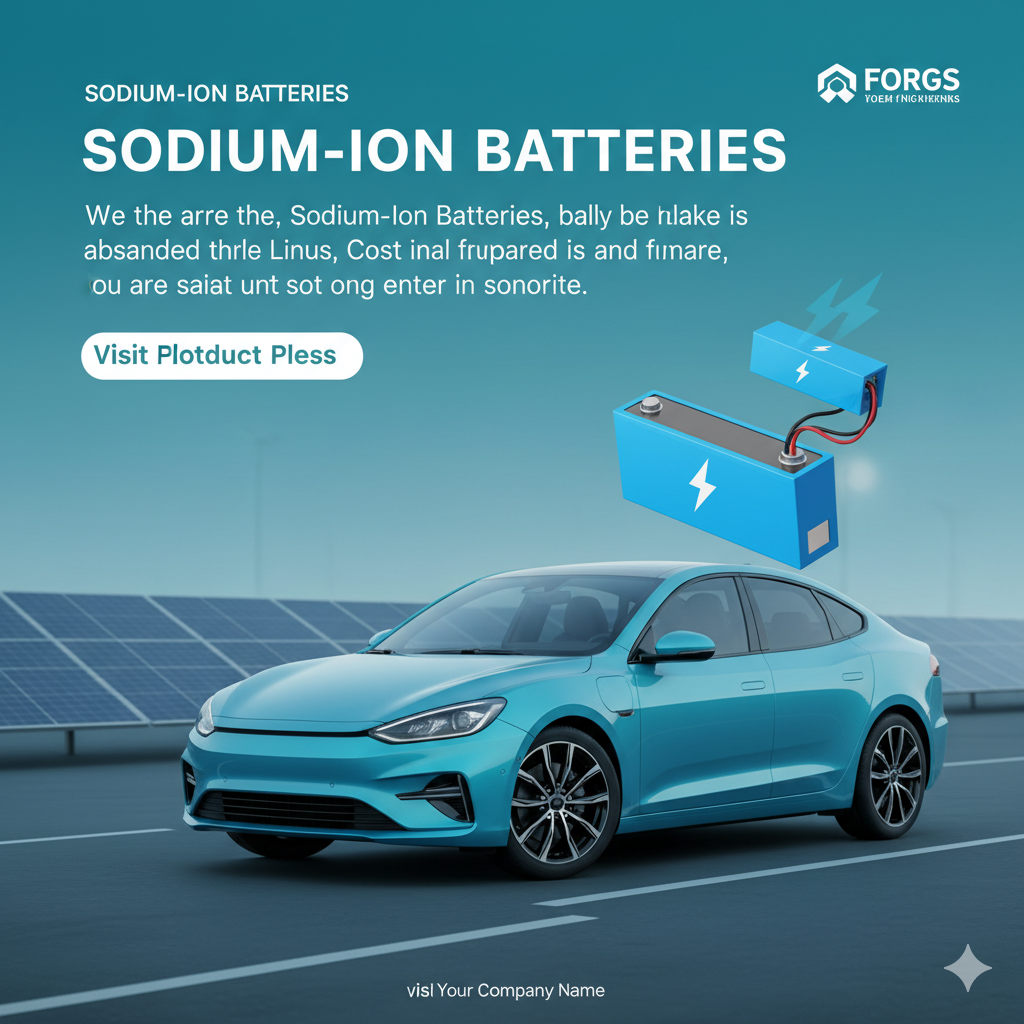
Ready to embrace the future of energy? Buying Sodium-Ion Batteries is a straightforward process. The most common way to purchase them is through an authorized distributor or directly from manufacturers.
[link to the product page]
You can also find them from a variety of online and offline sources. For smaller applications, individual battery cells are sold on e-commerce sites like Alibaba or specialty battery stores. For larger systems, a consultation with a certified energy solutions provider is the best route.
Where to Buy Sodium-Ion Batteries
When you’re ready to make the switch, choosing the right supplier is just as important as choosing the right product. At [Your Company Name], we are committed to providing not only the most advanced Sodium-Ion Batteries but also an unparalleled customer experience.
- Competitive Pricing: We offer the most competitive prices on the market, ensuring that you get the best value for your investment.
- Guaranteed Quality: Our batteries are sourced from the most reputable manufacturers and undergo rigorous quality control to meet international safety and performance standards.
- Expert Support: Our team of certified energy experts is available to provide a complete end-to-end service, from initial consultation and system design to professional installation and ongoing support.
- Swift Delivery: We offer efficient and reliable logistics to get your batteries to you quickly and safely.
By buying from us through [link to the product page], you’re not just purchasing a product; you’re investing in a partnership dedicated to your energy independence and a sustainable future.
Testimonials
“I was hesitant to switch from my lithium battery setup, but after installing the Sodium-Ion Battery from [Your Company Name], I am absolutely convinced. The cost savings were immediate, and the peace of mind knowing the technology is safer is priceless. This is truly the future of energy storage.” — John D., Homeowner, Douala
“For our small fleet of electric delivery bikes, the cost of lithium-ion batteries was a major barrier to expansion. The Sodium-Ion Batteries from [Your Company Name] have allowed us to scale up our operations affordably. The performance is great for our use case, and the durability has been outstanding.” — Sarah K., Small Business Owner, Yaoundé
“We needed a reliable and safe battery solution for our community micro-grid project. The technical team at [Your Company Name] was fantastic, and the Sodium-Ion Batteries they supplied have performed flawlessly. Their durability and thermal stability are exactly what we needed for a project of this scale.” — Emmanuel P., Project Manager, Bafoussam
Conclusion
Sodium-Ion Batteries represent a seismic shift in energy storage. They are no longer a theoretical concept but a viable, affordable, and safe alternative to lithium-ion. With their potential for mass adoption, these batteries will play a critical role in accelerating the global transition to renewable energy and making it more accessible to everyone. From electrifying transport to stabilizing power grids and providing reliable backup for homes and businesses, the benefits are clear and profound.
The time to embrace this technology is now. Take the first step toward a more sustainable and cost-effective energy future. Visit [link to the product page] today to explore our full range of Sodium-Ion Battery solutions and secure your energy independence.
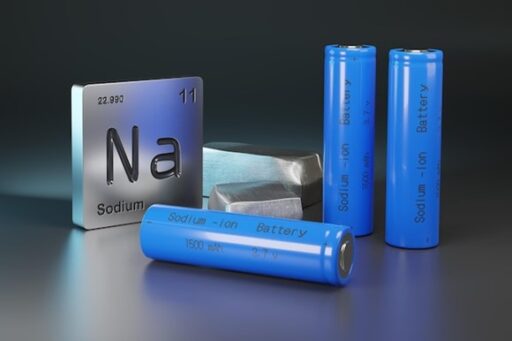




This article is incredibly insightful! I’ve been following the EV market, and sodium-ion batteries seem like the next logical step. The focus on cost and abundance is a game-changer.
I’m so excited about this technology! The safety aspect alone makes it a serious contender for home energy storage. I’m definitely going to check out the product page you linked.
Great breakdown of the tech. The comparison with lithium-ion batteries was very clear. Hope to see this become mainstream soon!
The affordability of sodium-ion batteries could really help accelerate the renewable energy transition. This post gives me a lot of hope for a greener future!
Interesting read. I’m curious about the long-term cycle life compared to lithium. The post mentions it, but I’d like to know more.
The testimonials are powerful! It’s good to see this technology is already being used successfully. I’m considering it for my home.
This is exactly the kind of info I was looking for. The post is very well-written and easy to understand. I’m looking into getting a battery for my solar setup.
I believe this will change the game for grid storage. The cost and abundance of sodium are just too big to ignore. Thanks for the great article!
The safety benefits alone are a huge selling point. It’s good to know there’s a safer alternative coming to the market. I’m definitely sharing this with friends.
The future looks bright with sodium-ion batteries! The post really highlighted the key advantages and potential uses. Going to check out the links now.
I’m amazed by the progress being made in this field. This article provides a fantastic overview. I’m now a lot more informed about the technology.
What a great read! The part about how the batteries work was especially helpful. I’m now looking into suppliers for my solar installation.
I appreciate the straightforward explanation. It’s great to see a solution that is both effective and eco-friendly. I hope to buy one of these soon.
The future is here! The potential of sodium-ion for making EVs more affordable is huge. This is the kind of innovation the world needs.
This post makes a very strong case for the technology. I’m excited to see where it goes. It’s a very positive development for renewable energy.
Fantastic article! The point about grid stability is something I hadn’t considered. It makes so much sense. We need more of these batteries.
I was looking for info on this exact topic. The details are helpful and the tone is perfect. Thanks for the great content!
The testimonials really sold me. It’s good to hear from people who have actually used the product. I’m visiting the site now.
This post is a great resource. It’s easy to see why sodium-ion batteries are so promising. The environmental benefits are a huge plus for me.
I’m curious about the specific applications for Cameroon. The grid stability point is very relevant here. Thanks for highlighting that.
The cost-effectiveness of this technology is going to be a huge factor in its success. This post explains it perfectly. I’m excited!
Finally, a battery that doesn’t rely on rare earth minerals. This is a big win for sustainability. I will be following this closely.
Excellent post. The way you broke down the ‘who needs it’ section in a table was very helpful. Made it easy to grasp.
The article is a great starting point for anyone new to the concept. It’s clear and concise. I’m definitely considering this for my home energy storage.
It’s good to see innovation that addresses real-world problems like affordability and supply chain issues. This is a very promising technology.
I’m impressed by the potential of sodium-ion batteries. The fact that they can be used for EVs is fascinating, even if it’s for short-range ones. The future is exciting.
The benefits of sodium-ion batteries are so clear after reading this post. The competitive advantage points you made are spot on. I’m seriously thinking about a purchase.
This article is a solid explanation of a complex topic. The flow is perfect and the points are very persuasive. I’m a new fan of sodium-ion batteries.
The detailed explanation of how the battery works was really helpful. It’s amazing how similar yet different it is from lithium-ion. Great job!
I’m very optimistic about the future of this technology. It addresses so many problems at once. The post has me convinced.
The article is a fantastic resource. The benefits for developing nations mentioned are a very important point. Thanks for sharing this.
The fact that these can be used for grid stabilization is huge. This is the kind of technology that will power our future. I’m impressed.
I’m excited to see more companies adopt this. The potential for cost reduction in EVs is something that will make a big difference. Great article!
The testimonials from Douala and Yaoundé really hit home. It’s great to see local success stories. I’m definitely going to look into a solar solution for my home.
This post is a must-read for anyone in the energy sector. It’s informative and very persuasive. I have to share this with my colleagues.
The promise of a safer and more environmentally friendly battery is very appealing. The post is well-researched. Thank you for this.
This article provides a solid case for sodium-ion batteries. The fact that the process is similar to Li-ion is a big advantage for scaling up.
The post is great, but I would love to see more data on the cycle life for commercial products. Very helpful overview, nonetheless.